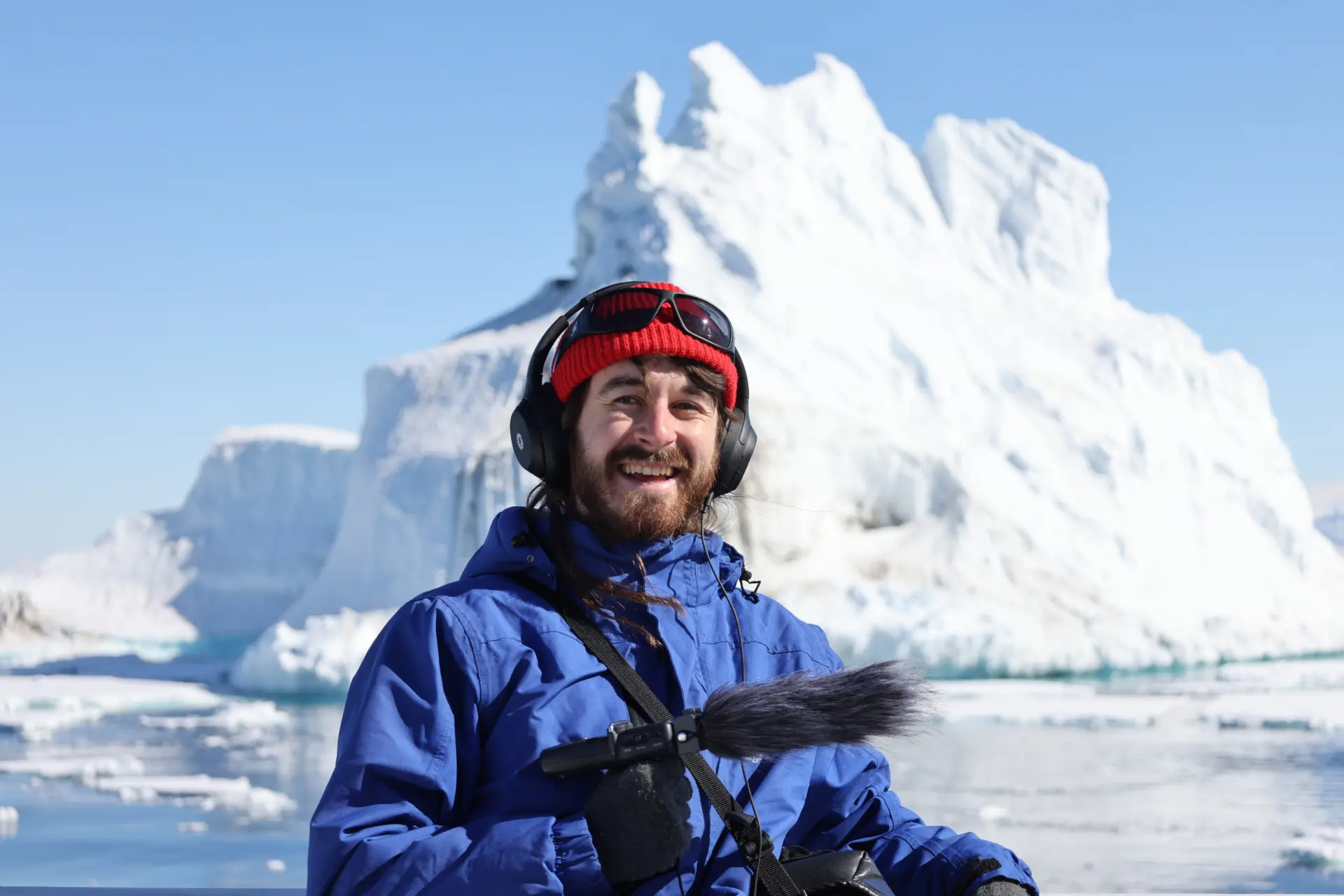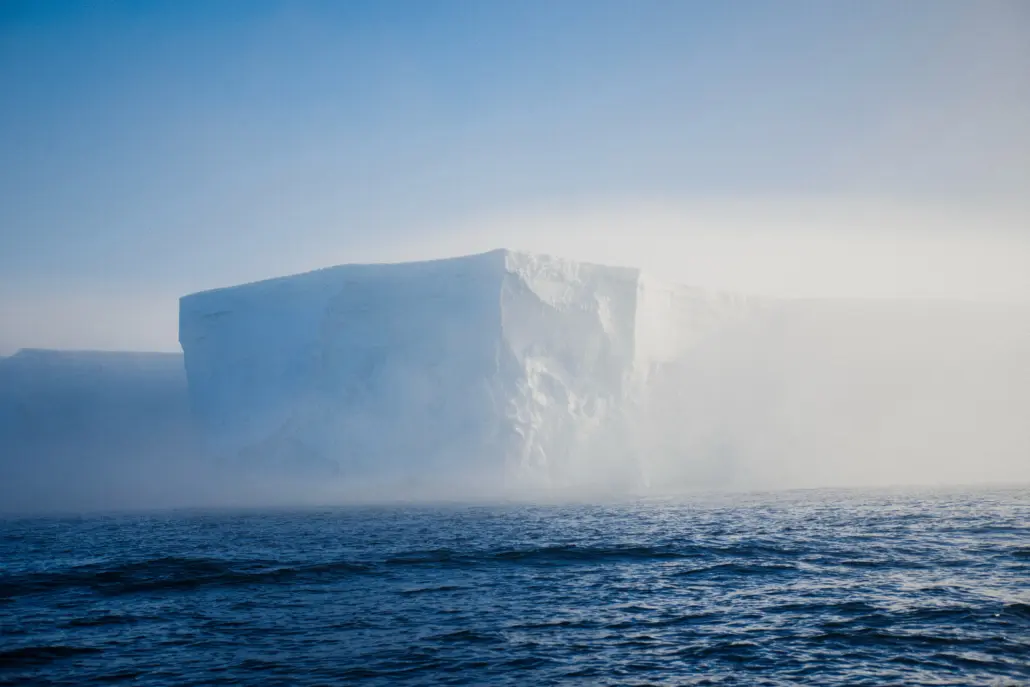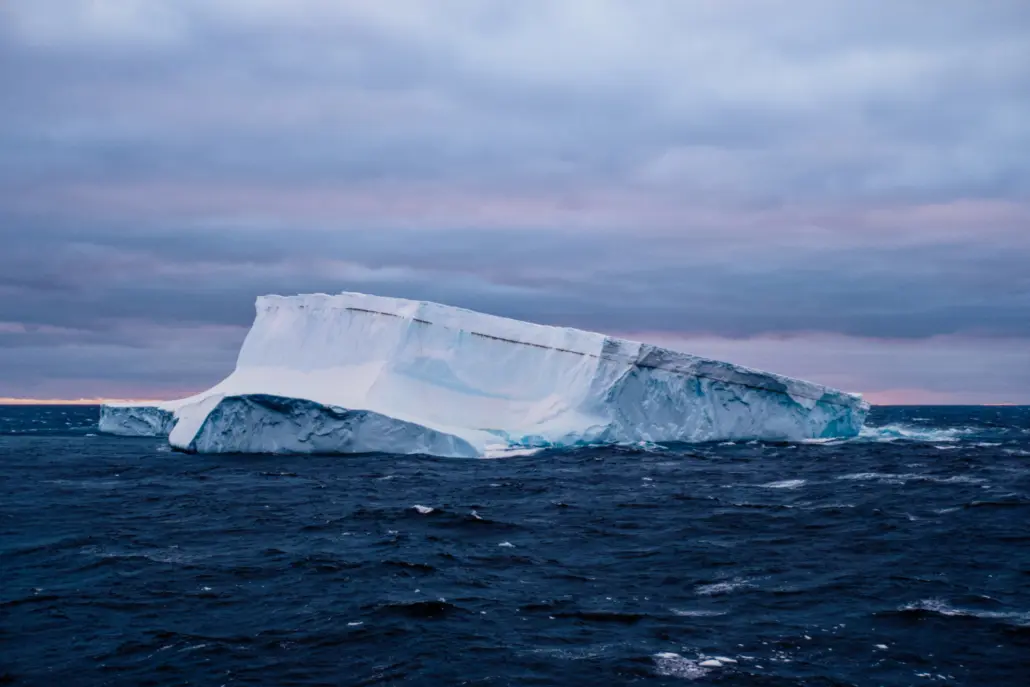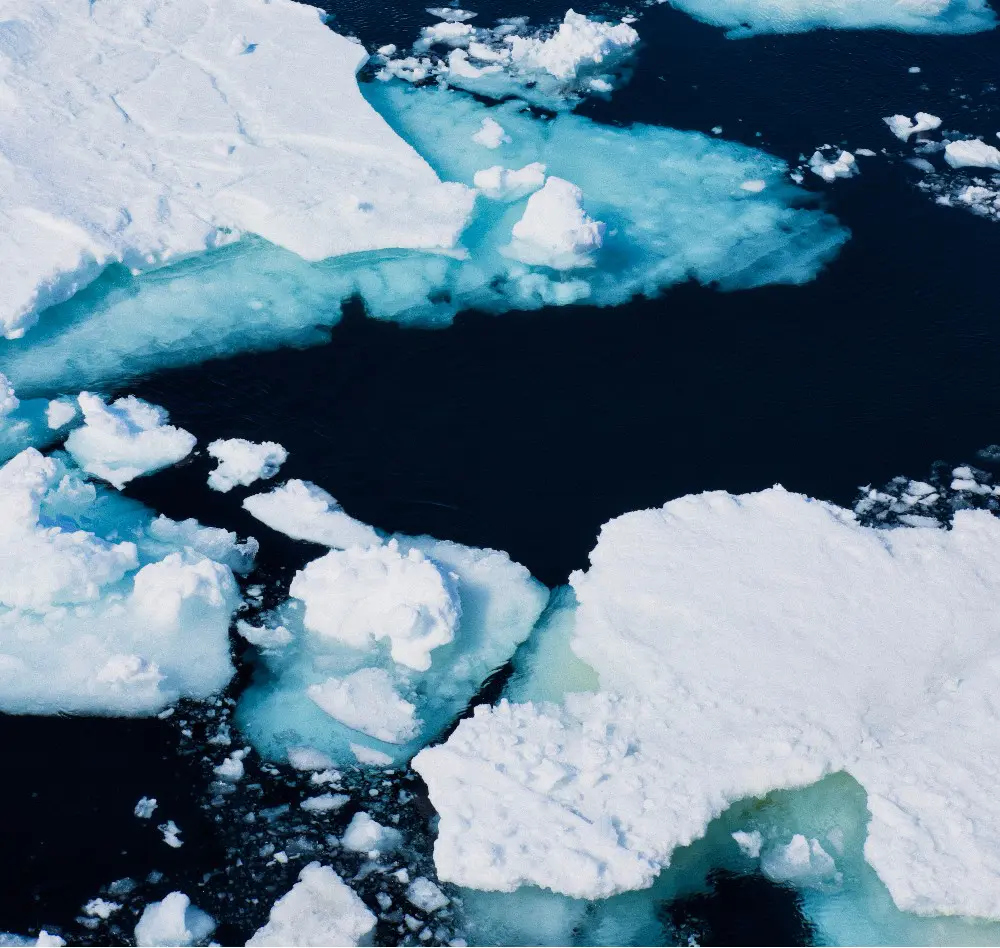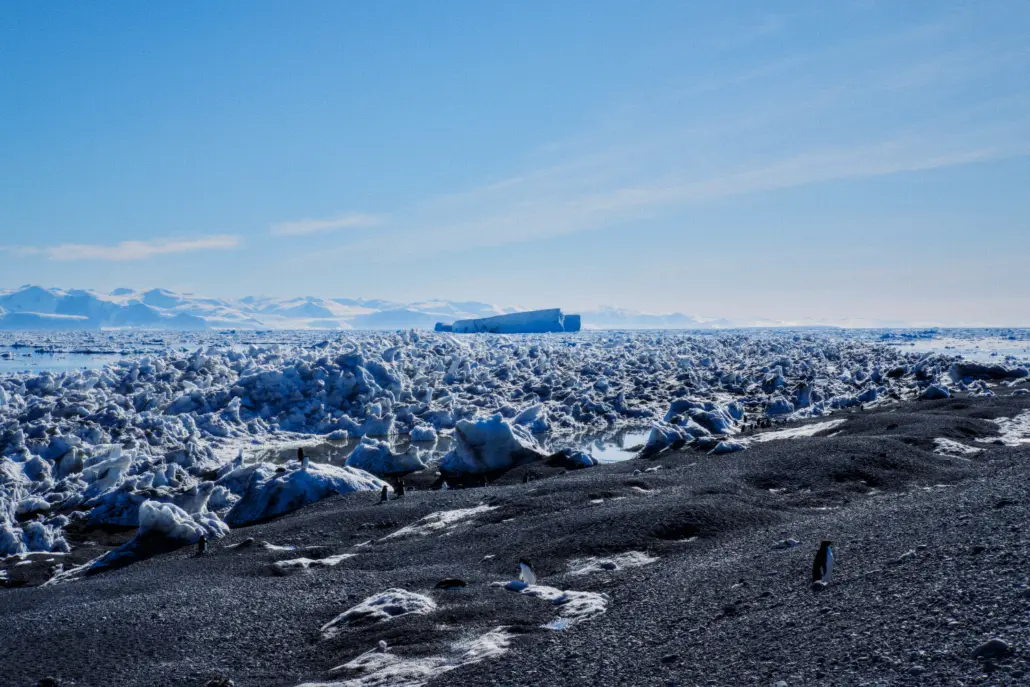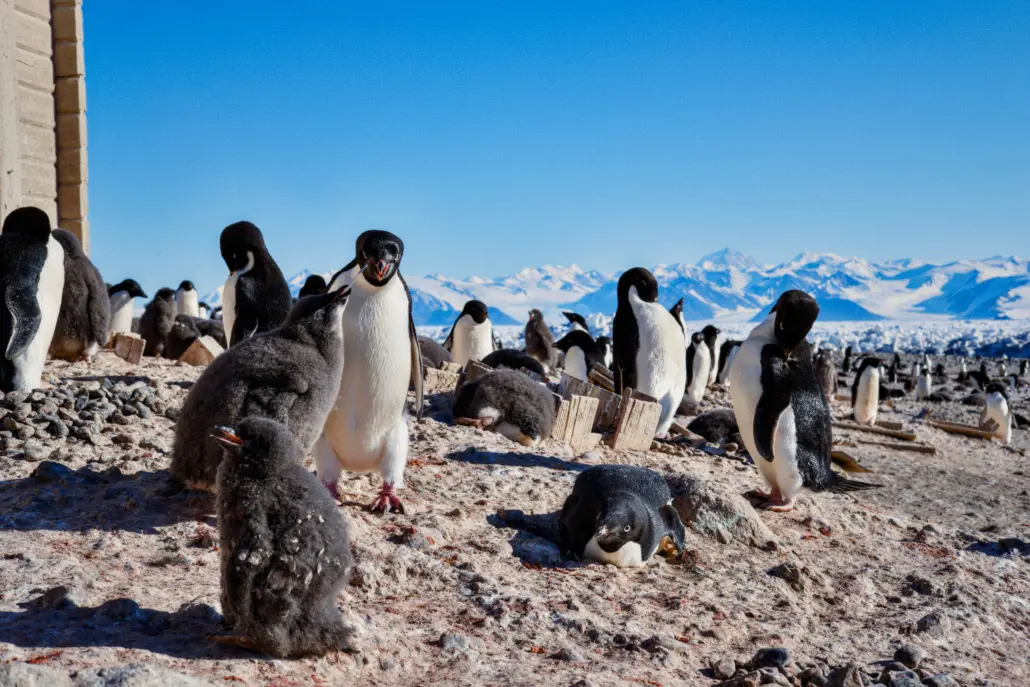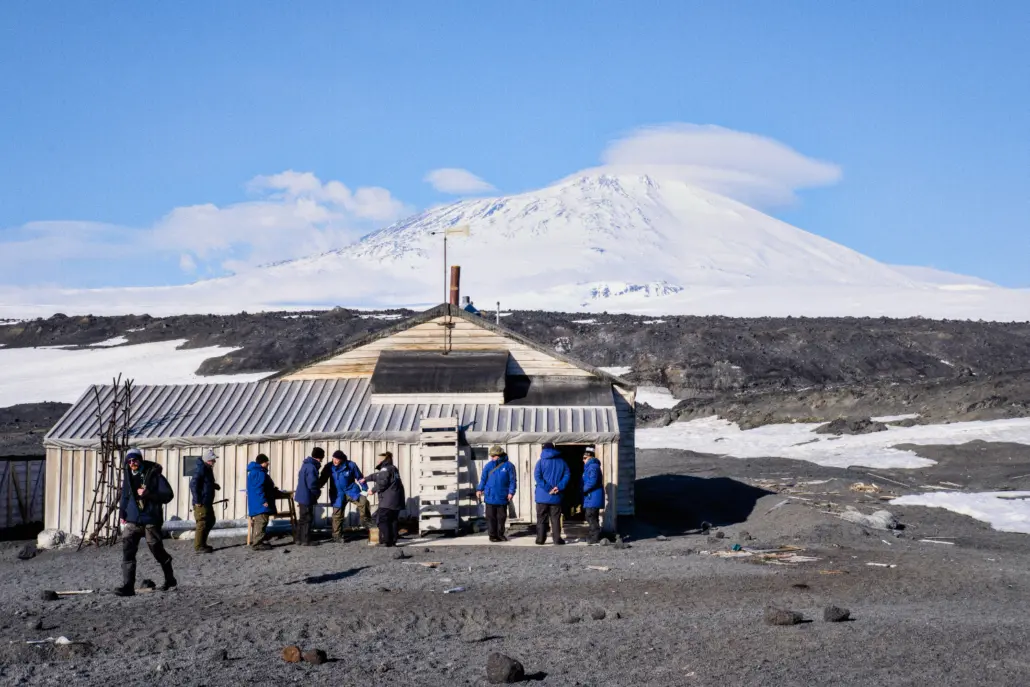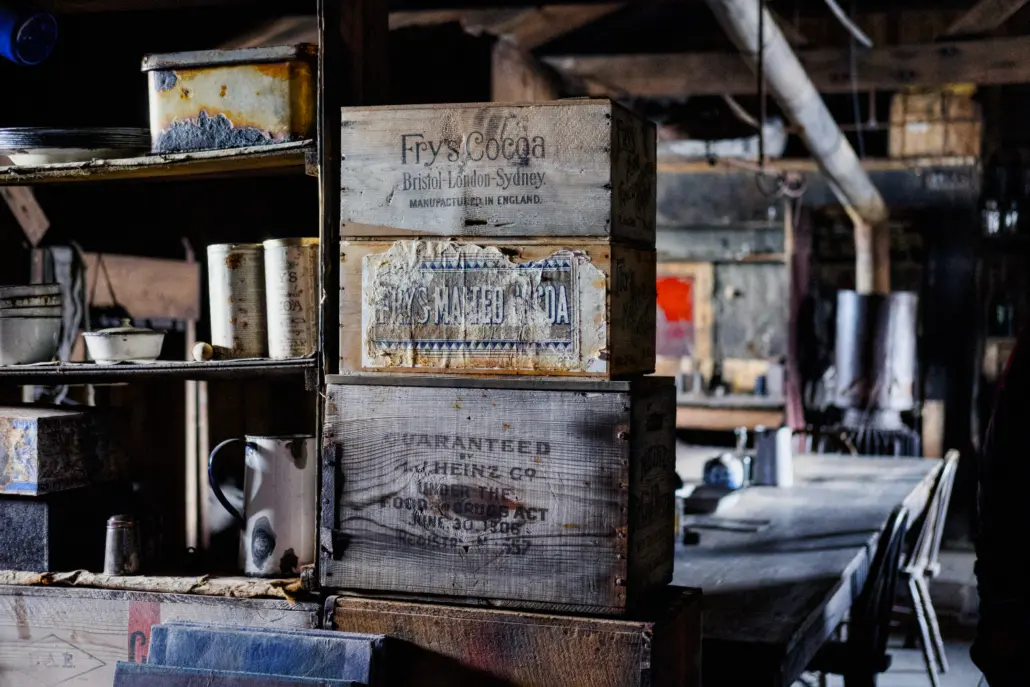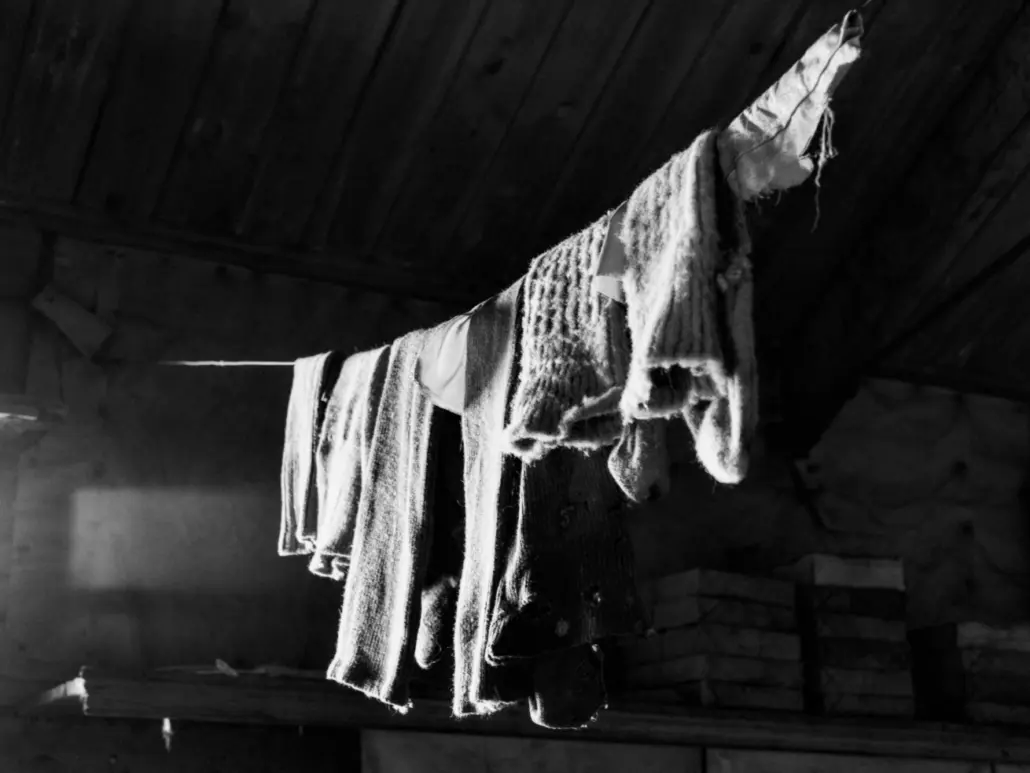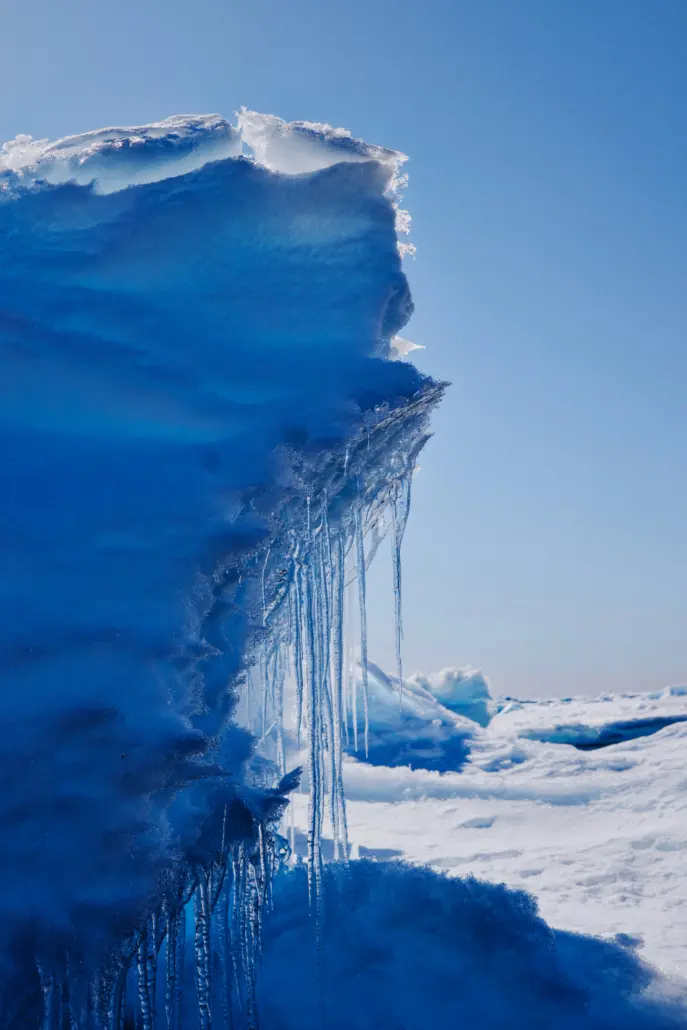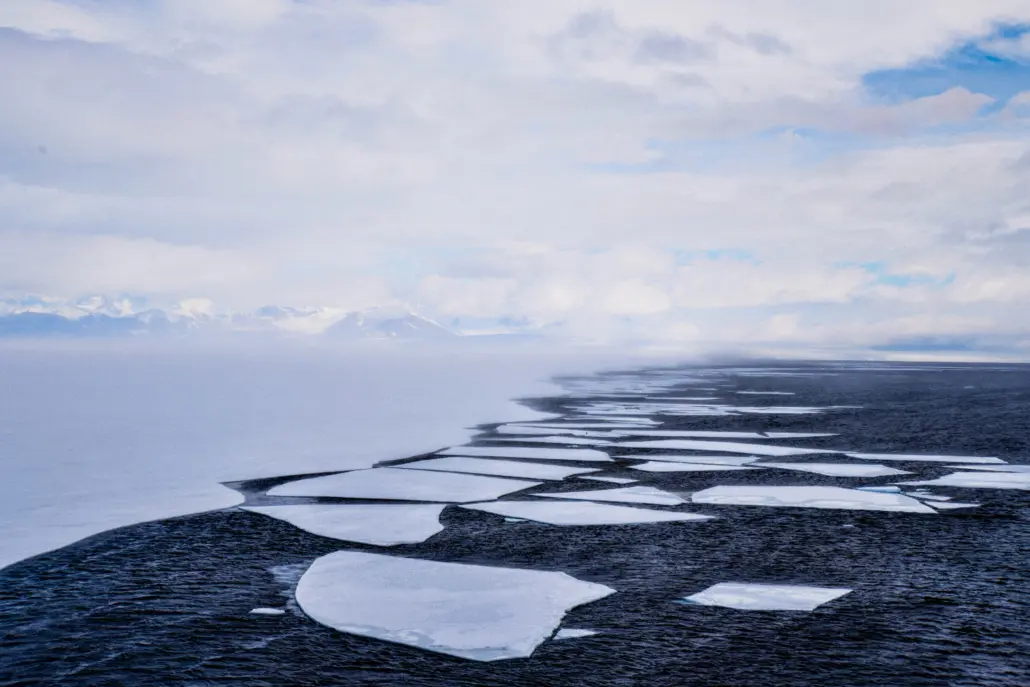Expedition Blog – Calum Turner, Ross Sea 2025
So what was it like?
When someone asks you that entirely valid question, ‘so what was it like?’, they usually have some idea about what things you might objectively experience in Antarctica. However, it’s the recount of these parts — what you choose to focus on and how you tell them — which creates an authentic account of it what it really felt like. I make no exaggeration when I say this: having the honour of being chosen to visit the Ross Sea region of Antarctica as an Inspiring Explorer™ profoundly changed my perspective on life.
Obviously, I expected to be wonderstruck. I knew it was going to be a place quite unlike any other, and I anticipated that seeing it for myself would expand my logical sense of the world. I understood that it would provide valuable context to the stories of legendary polar explorers like Sir Ernest Shackleton and Captain Robert Falcon Scott, — and without a doubt, it absolutely did.
Regardless, there is a powerful, wordless feeling that comes with truly grasping the grand scope of Antarctica by being there. It’s one that has permanently etched itself into me since the expedition and have naturally found difficult to express to people back home. To be clear, I’ve sat my friends, family and colleagues through marathon-length multimedia slideshows in a somewhat futile attempt to explain the extent of this frozen expanse; attesting to the brutal but sublime, remote beauty of the environs. No one doubts how remarkable it must have been, but unfortunately there is only so much telling someone can bring about the same feelings in them. This is not to discount the incredible value and impact sharing photographs and storytelling has, but to tell you the whole story, I first have to show you how it changed me.
How does one express an inner sense of a deeply affected wonder, totally unique to a place in time, to someone who has never been, and likely will never be able to go? I don’t expect to answer such a lofty philosophical question in a blog post, let alone ever. But hopefully by exploring this idea here through sharing my thoughts, images and most important to me — sound — I can bring you one step closer to understanding what we experienced. Not everyone needs to visit Antarctica for themselves, but I think everyone would benefit from understanding why it is such a truly special place.
Preparing for the Expedition
Perhaps I’m getting ahead of myself. In my everyday life, I live in Te-Whanganui-a-Tara (Wellington) and work as a generalist in the fields of design, music and technology. When I was a kid, I used to pour over adventure novels and read books from Horrible Geographies which featured stories from the classic polar expeditions. I got a kick out of pondering how simultaneously terrible yet thrilling it would have been to go the end of the earth simply to find out what was there. As an adult, I stimulate my own and other people’s imaginations by making things with technology instead. One of the ways I do this is through producing music digitally utilising field recordings, taking cues from real life stories and bringing listeners along for the journey through sound.
When I found out about the Inspiring Explorers™ programme through a friend who had been the previous year to South Georgia, my mind began to spin with ideas of what I would do with that opportunity. I knew I had to apply, especially given there would be a podcast component which I could contribute to. I imagined recording the rushing sound of the elements, the creaking of ice, the unique calls of endemic wildlife. I thought about how I could document the hum and creak of the ship, and ask the others to reflect on what they were experiencing in the moment. At that point in my life, I’d never been out on the open ocean, let alone that far from civilisation before. I knew I had to capture the essence of what it felt like to be there through sound, a medium that is often an afterthought in lieu of visual imagery. When I found out I was indeed chosen to join the expedition, it was all at once surprising, affirming, and daunting. With privilege comes responsibility, and the need to overcome the imposter syndrome of living up to that task became a challenge that I had no choice but to accept. And I had to accept that fast — I’d be leaving in only a couple months!
In preparation for the journey, I packed pretty much every useful microphone I had in my house, including contact microphones which I could hold against surfaces to record their vibrations. I even had some talented friends of mine design and 3D print me a custom made parabolic dish, which looks a bit like a TV satellite, so I could record things that were hundreds of metres away. What I soon found out was you only have room to carry a few things with you when you’re out on a Zodiac in the freezing wilderness, so less is often more. As well as needing to protect sensitive equipment from the cold and wet, chances are you’ll probably be wearing two pairs of gloves, so adjusting dials or swapping things out becomes an incredibly cumbersome task. In the end, depending on how close or far away I was from the thing I wanted to record, I mostly just used the dish and a shotgun microphone. These all had to be covered in weather protection and attached to a portable recorder which lived in a camera bag. Everything else on me had to be dedicated to staying warm and dry.
The Ross Sea
Entering the Antarctic Circle via ship for the first time is characterised by the senses in a few distinct ways:
- The air rather suddenly feels far crisper than usual, as if you walked into the misty breeze of an open commercial kitchen freezer. Almost as if the permafrost of Antarctica had a shadow.
- Every day becomes longer, until the sun stops touching the horizon altogether, like an endless afternoon.
- Albatross and tern follow the ship for days, gliding effortlessly, hundreds of kilometres away from land.
- Whales of all kinds; pilot whales, humpback whales, blue whales, orca (I had never seen a whale in real life before).
- Suddenly, an unfathomable amount of ice in all directions.
I will never forget the moment we saw an iceberg for the first time. It had this entirely dominating yet enthralling presence, a mountainous sculpture of great magnitude which looked like it was thoughtfully sculpted by the waves crashing against it.
The Antarctic waters are often incredibly liminal, which gives an effect to icebergs similar to a piece of art, surrounded by a white walled gallery.
I’m not usually a morning person, but waking up to the sound of broken pack sea ice scraping gently against the metal hull of the ship got me out of bed with my audio recorder in hand in less than ten seconds.
I pressed my face against the window and took it all in. A Crabeater seal, as if it knew I’d be there in that moment, flailed about playfully on a nearby passing chunk of ice as if to say good morning, before quickly getting back to its nap and ignoring us altogether.
Upon entering Cape Adare, it was rapidly apparent this strikingly beautiful white-blue landscape was ruled completely by the elements — without exception. Almost as if they have a mind of their own, castle-sized icebergs cruise along the ocean currents here with unnerving speed. Thankfully, the ship’s captain found a way to navigate through the precarious moving maze of frozen ocean.
Being in a modern ship equipped with radar and huge diesel engines, my mind cast back to just how brutal it must have been for Carsten Borchgrevink’s crew who arrived there in 1899. Not only would they have been unfamiliar to this place, but would have had none of the safety and comfort we had available to us aboard the Heritage Adventurer.
Of course, there are some residents here who thrive in a place like this: penguins. An established Adélie colony is impossible to avoid smelling, and boy is it… distinct. It was a stark reminder of how death and decay fit into the natural life cycle of the wilderness. The sight of Adélies however is delightful. During nesting season, penguin parents are chased around by needy chicks. They charmingly waddle around, mostly disinterested in people, tobogganing across the ice and transforming into a graceful underwater flier once in the water. And then of course, the sound: as you might imagine, tens of thousands of penguins and their chicks is at times as deafening as a football stadium. It’s a glorious racket that I’ll never forget.
The Huts
I originally studied photography at university because I was interested in the tension between truth and documentation — I still am, but these days I’m more interested in how I might do that with sound. With the historic huts at Cape Adare, Evans, Royds and Hut Point to look forward, to I anticipated the structures would perhaps have a sound inherent to them which I could find a way to record, such as creaky floorboards and wind rushing against the walls. However, upon entering Scott’s Terra Nova hut at the foot of Mount Erebus, it was abundantly clear that to record anything on site, I needed to have been there in 1911-13. The huts, even in their magnificently conserved state, were effectively frozen in time.
Al Fastier, former Programme Manager of the Antarctic Heritage Trust’s Ross Sea Heritage Restoration Project, who helped lead the conservation of this building along with the artefacts inside, joined us as a guide for these visits. He explained to us how the Trust maintains a “spirit of place” through in-situ carefully considered conservation work, at times leaving things exactly where they were to better represent that lived reality. This intangible static atmosphere is virtually impossible to capture directly with audio recording, because the room’s surface materials naturally absorb noise, and audio effectively relies on time with stuff happening in it.
Without being there with Scott’s crew, sheltered from the raging winter storm outside with the crackling stove working to keeping the cold at bay, Terra Nova hut sits in complete monastic silence.
To be clear, this silence was incredibly powerful, and if you ever have the privilege of seeing it yourself, I recommend taking the opportunity to soak it in. It allowed my senses to operate at full sensitivity as I visually absorbed the textural aspects of the artefacts in the dim light. By casting my attention into the surroundings, I was immersed in the distinct smell of wood, seal blubber and weathered fabrics, taking in the emotional heaviness of the room.
I felt silly for anticipating sound to record, but upon reflection I could take a leaf out of the conservators’ book: what do you know of a place, its stories, its context, its materials? How can that spirit of place be recreated for others in way that feels genuine and affecting? Perhaps I can’t record the sound of Captain Robert Falcon Scott thumbing through pages of The Count of Monte Cristo by the stove at Discovery Hut, but I could certainly collage the sound of pages turning, howling wind, and fire crackling away much to the same effect. Or perhaps I could even compose a piece of music which captures the essence of what it feels like to be there. Either way, imagination still has a large part to play in remembering history and allowing yourself to be moved by it.
Lessons learned
Audio recording in Antarctica is uniquely challenging, as you’re often at odds with howling winds, a dangerous, fast moving environment, and especially if you’re on an expedition cruise — the chatter and camera clacking of other people (not to mention ship engine noise)!
Cameras can crop out distractions, but microphones pick up everything. I initially frustrated myself with a unnecessarily purist attitude about this, wanting clean recordings free from anything but the subject. Thankfully, I soon got over myself and came to accept the context of what allowed me to be there in the first place. I too was a visitor, and who was I to feel bitter about that privilege? What helped tremendously was learning how to bring other people along with me into the active listening experience. By asking people to silently listen to the sound world around us for a few moments, I was pleasantly surprised to find that not only were people on board with the exercise, but found it profoundly enjoyable. Ironically, by helping others tune into listening then and there, I was already sharing the very experience I was trying to document for them.
Home
Returning to the soil of Aotearoa after this expedition felt like wiping the mist from a mirror. What had once lived only in my imagination I had now seen a tiny fraction of in real life, but it was enough to completely change what I considered to be important. On the one hand, I immediately came back to terms with the footprint of civilisation in the form of introduced weeds, seemingly inescapable human noise, iPhone notifications, and a distinct absence of blue whales or Adélie penguin colonies. On the other hand, I was struck with a deep feeling of grounded relief. To see verdant forests and my loved ones again; to hear the rustle of leaves in the trees and the clamour of people going about their day; to feel warm air on my skin; I knew deep in my bones that I was home.
In that moment I felt a reverent glimmer of understanding what the Antarctic explorers must have felt: what it really means to leave all this behind, with no clear idea of when or if you’d ever return, to be in an extremely isolated place which was hostile to your existence in nearly every respect. Yet these men, through sheer force of grit, curiosity and leadership, whether they liked working together or not, somehow managed to defy those punishing odds. And while not all of them were fortunate enough to live to tell the tale, others managed to perform truly incomprehensible feats of human endurance, leaving a ripple of inspiration which calls people to adventure to this day. So why did they choose that life? Perhaps it’s because no other place quite challenged them to their limits in such a profoundly spiritually fulfilling way as Antarctica could do for them.
Home is a totally different world from the frozen one we were fortunate enough to visit. I’m grateful for that. Antarctica is not exactly the kind of place you’d want to live unless you have a really good reason. The gift of understanding what a largely untouched place on the edge of civilisation looks and feels like, comes with an even larger responsibility to advocate for its protection. The challenge is gifting on these stories in a way others back home can relate to, and therefore care about.
There’s a joke among the Inspiring Explorers™ that returning home from an expedition has the effect of making everyone quit their old job to follow a more personally meaningful line of work. I think there’s a shared subtext behind that: it’s often in a moment of total perspective change, where you’re challenged to entirely re-contextualise yourself and your priorities in the world, that you see yourself and what you’re called to do with greatest clarity. To me, that’s what it feels like to visit Antarctica.
Gratitudes
I must acknowledge everyone at the Antarctic Heritage Trust who made this possible, who not only entrusted me with the opportunity to take part in this expedition, but each inspired me in their own ways. You all are incredible people who do incredible work.
A shout out to my fellow Inspiring Explorers™ — my new friends — you made this journey incredibly fun and memorable for everyone on the ship. I’m grateful you shared yourselves and your talents wholeheartedly, I have so much respect for you each individually. Thank you for indulging my manic drive to record all kinds of niche sounds at odd times of the day.
To the donors of the Trust who made this financially possible, a huge thank you. I could not think of any other way I would have been able to have this experience without your support. By safeguarding history, you safeguard the future.

